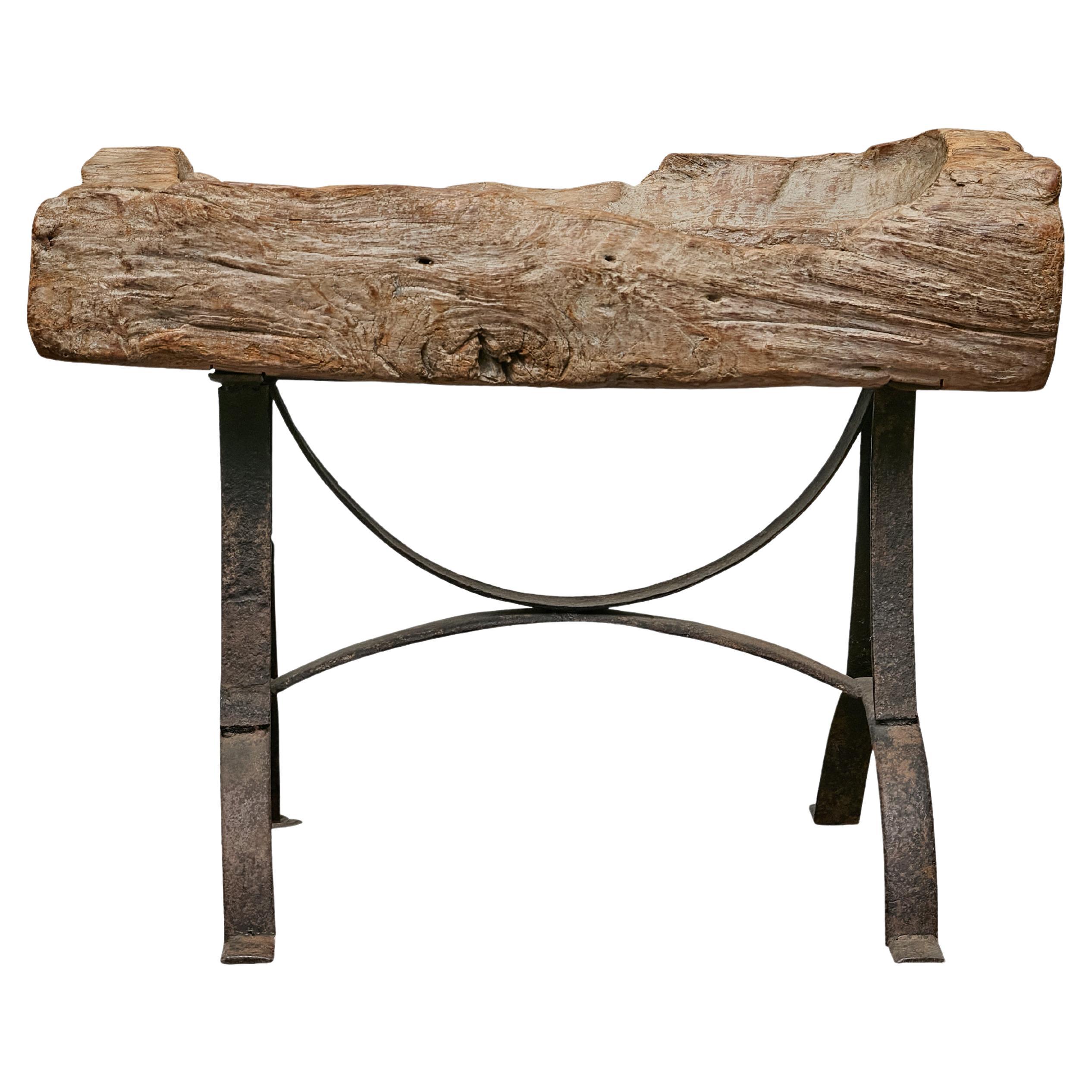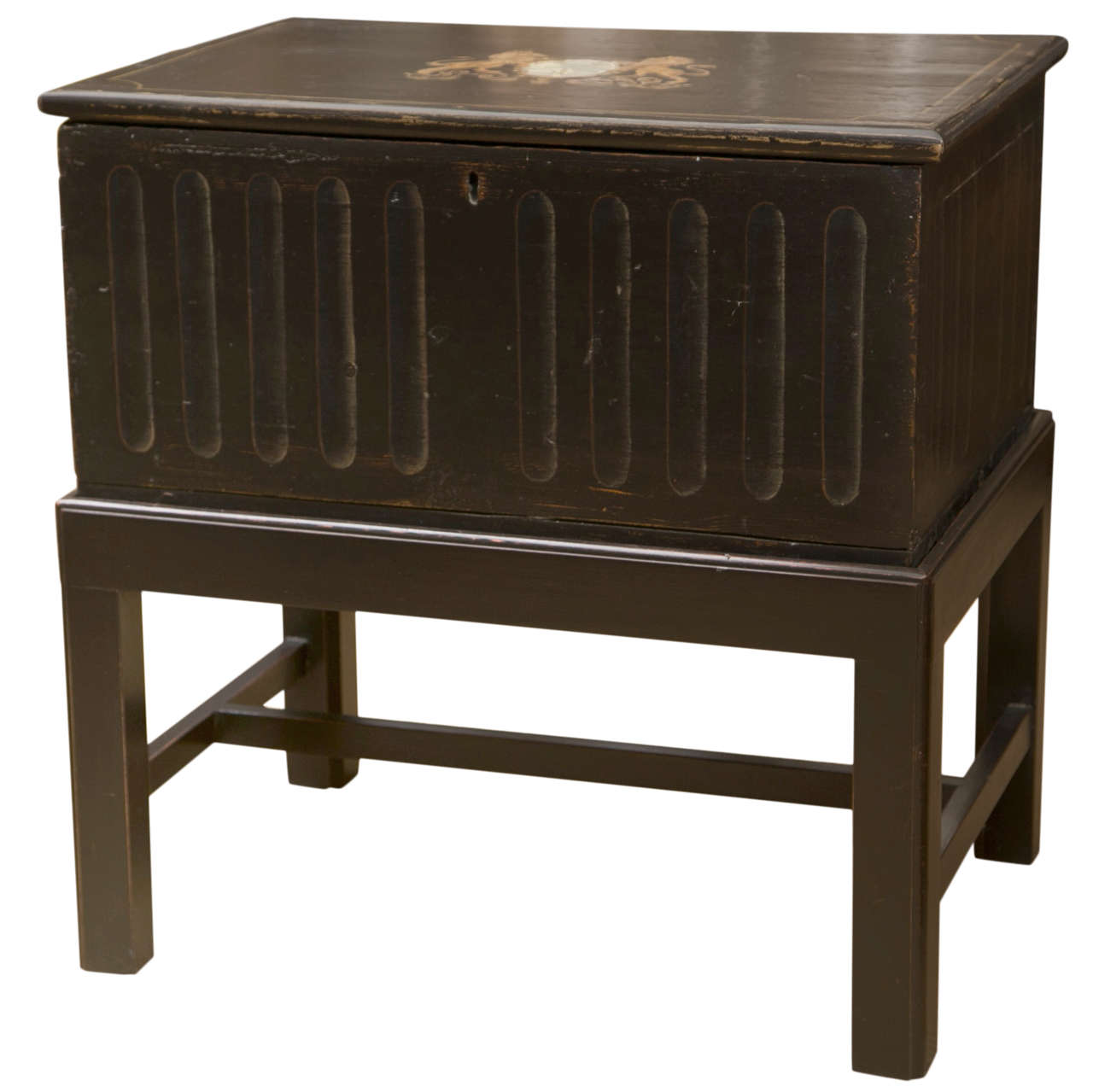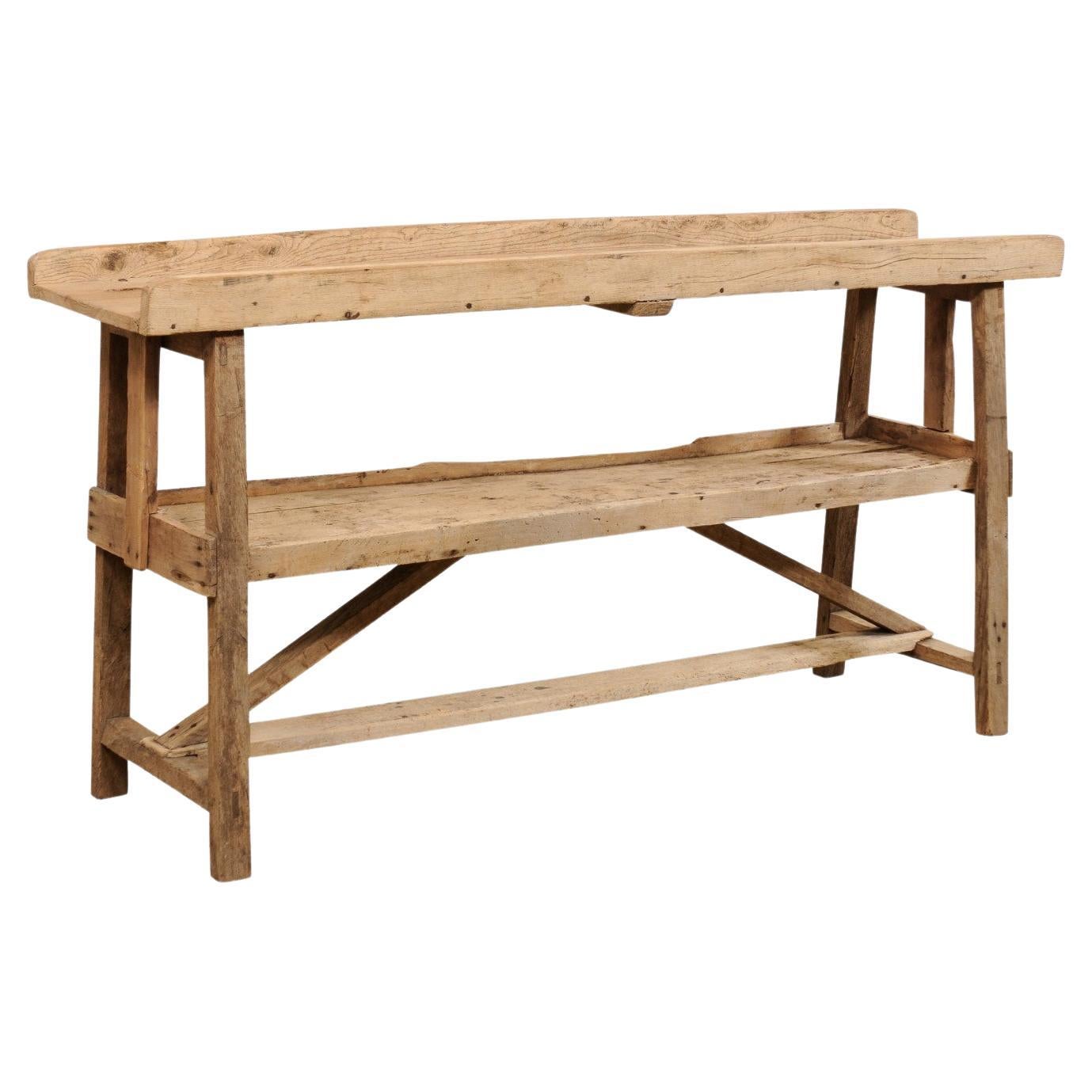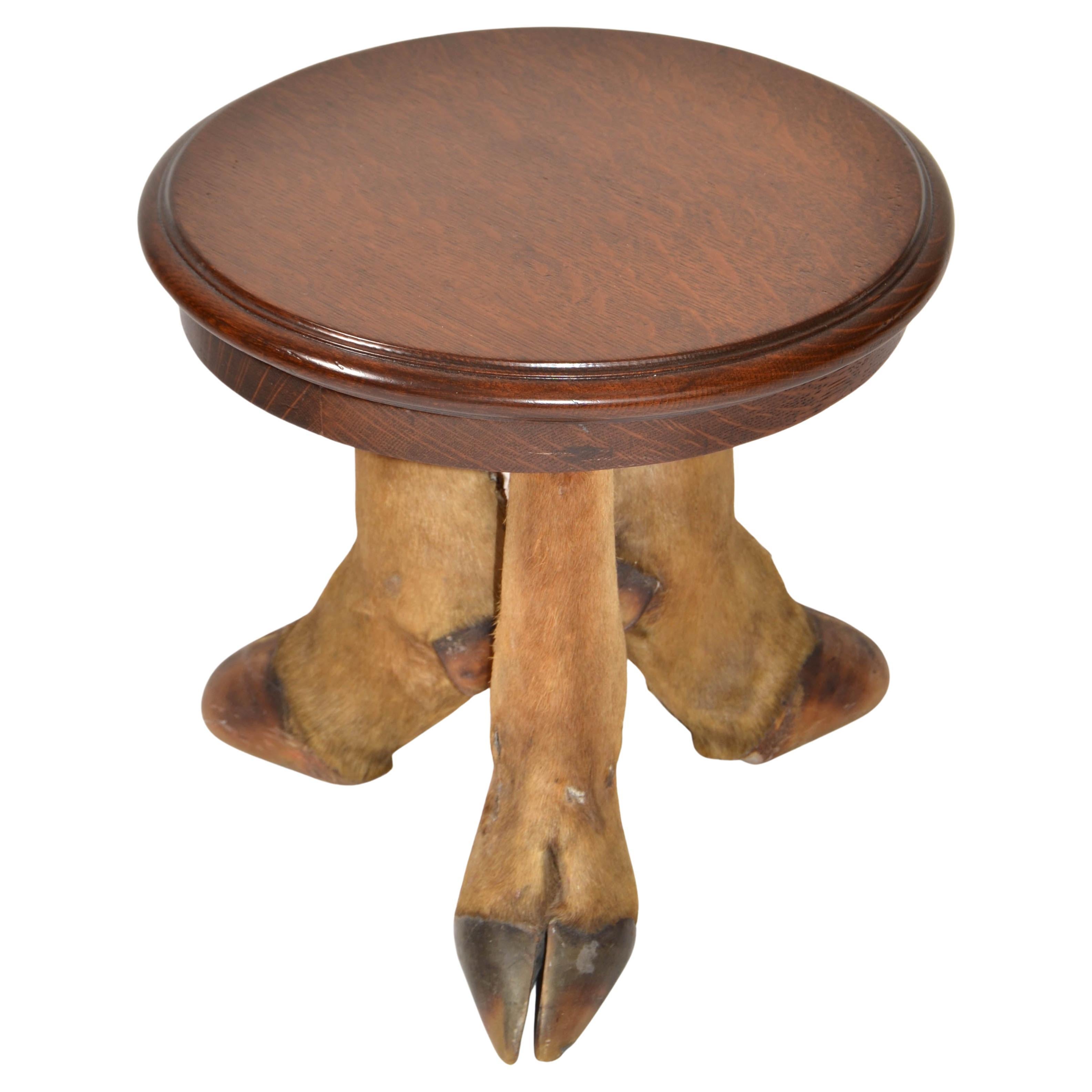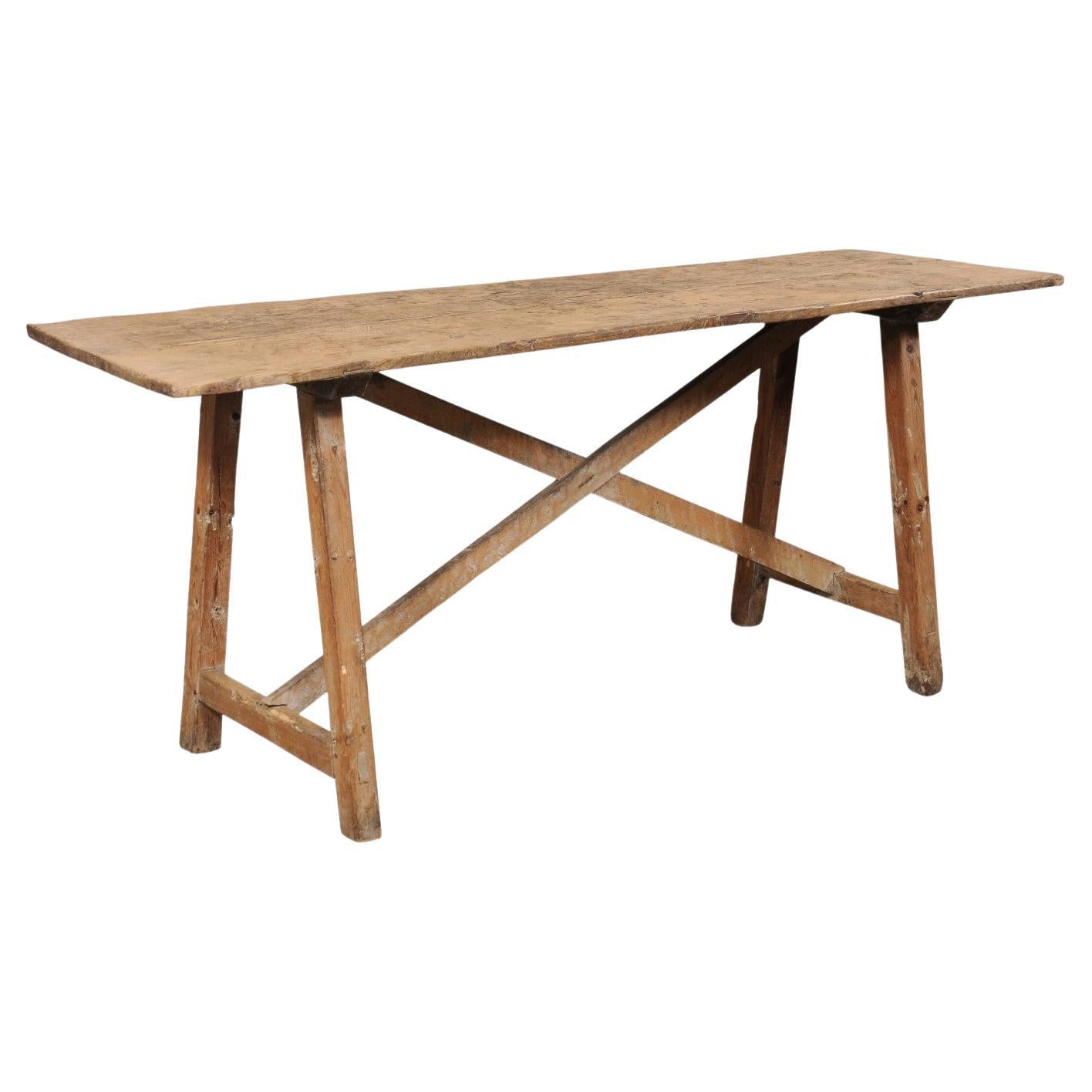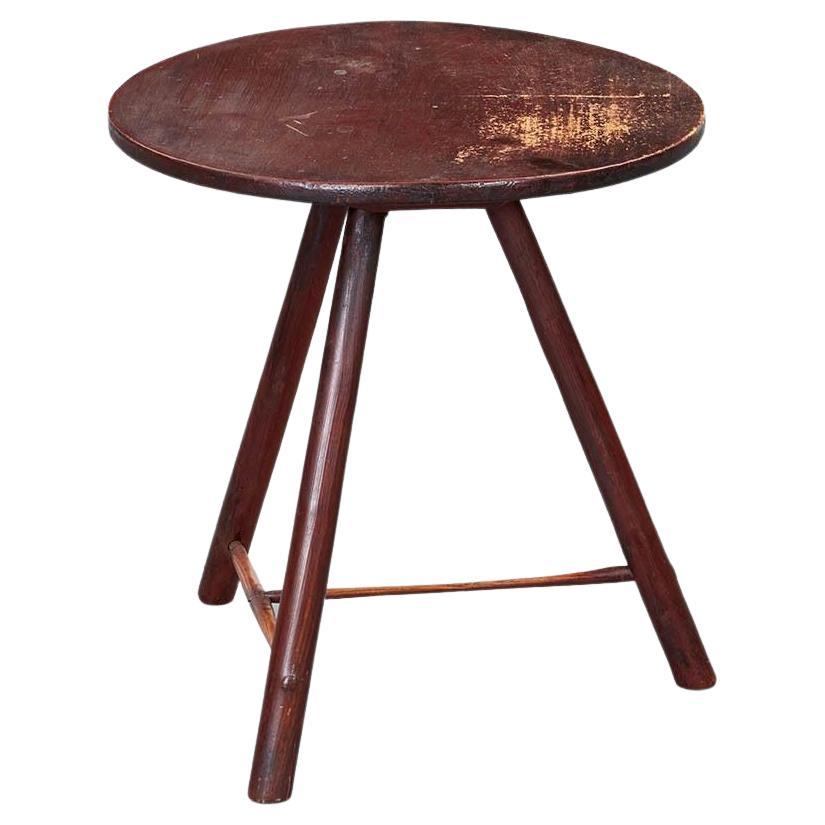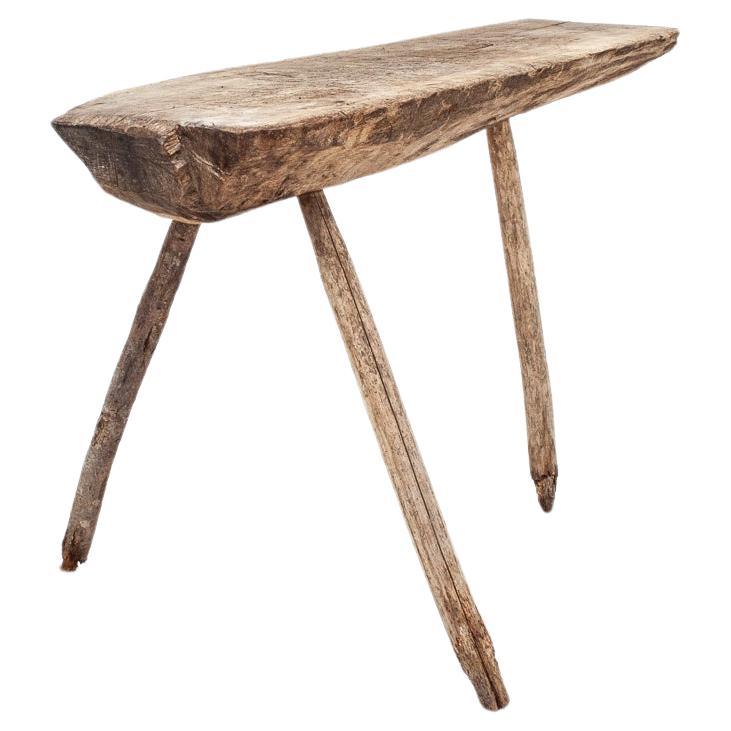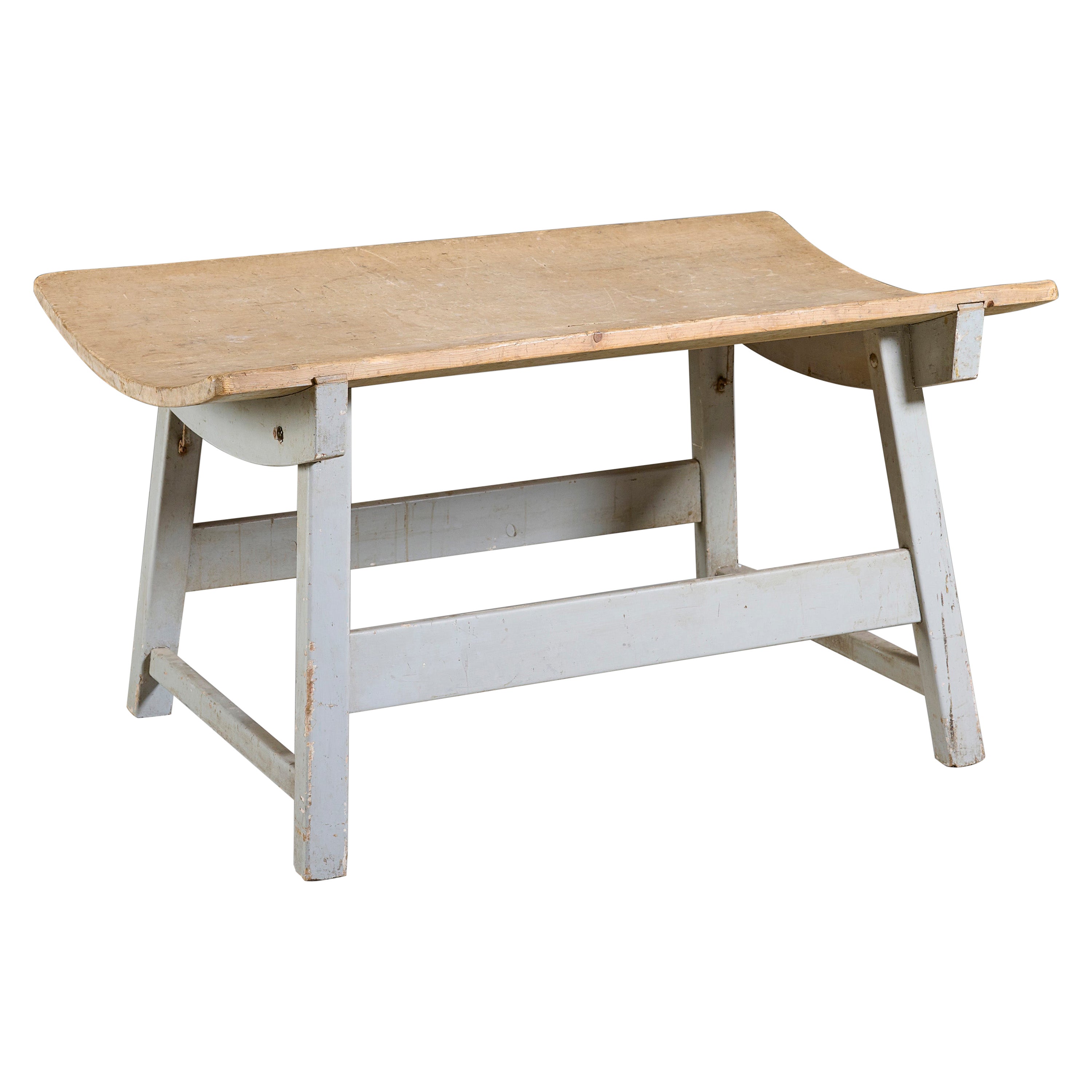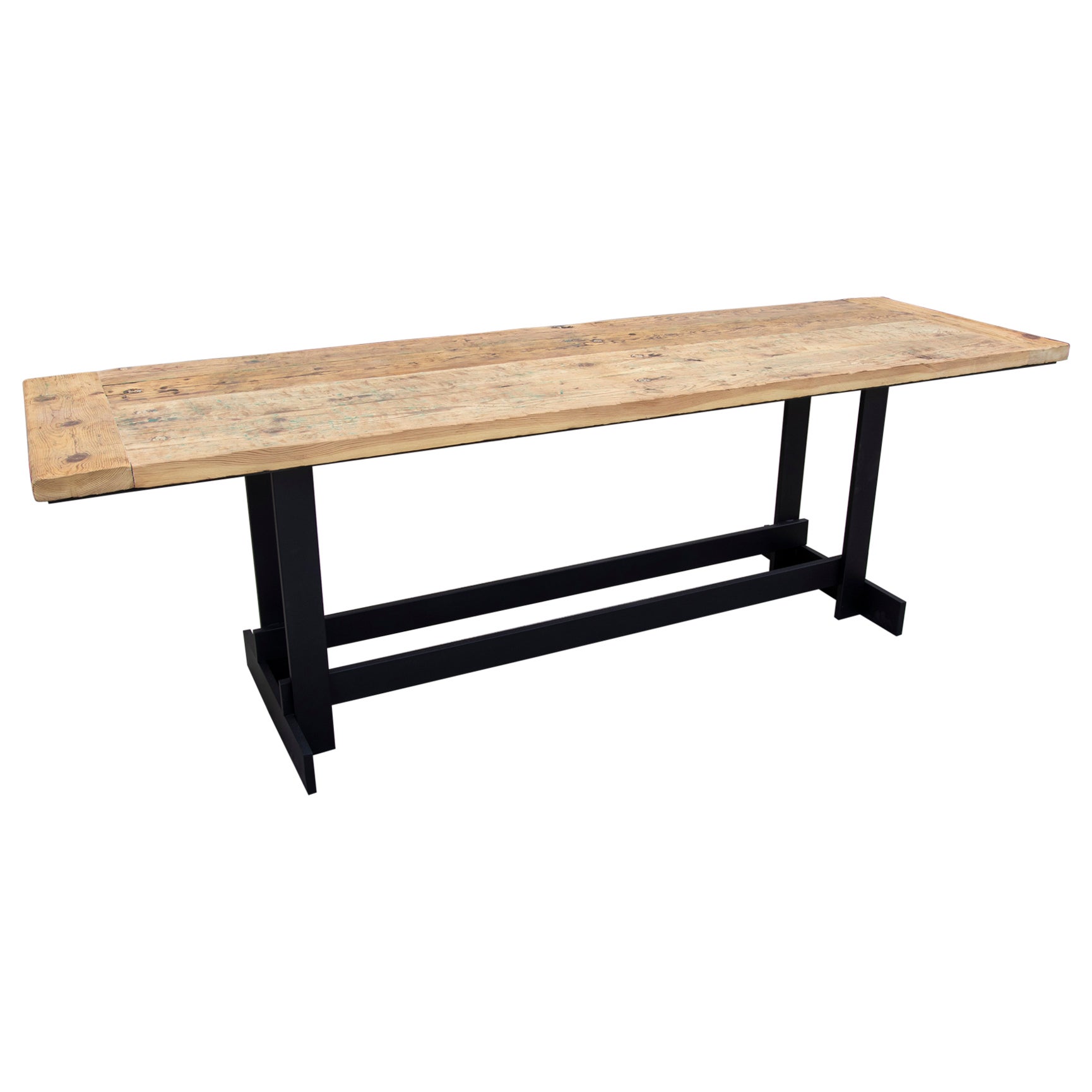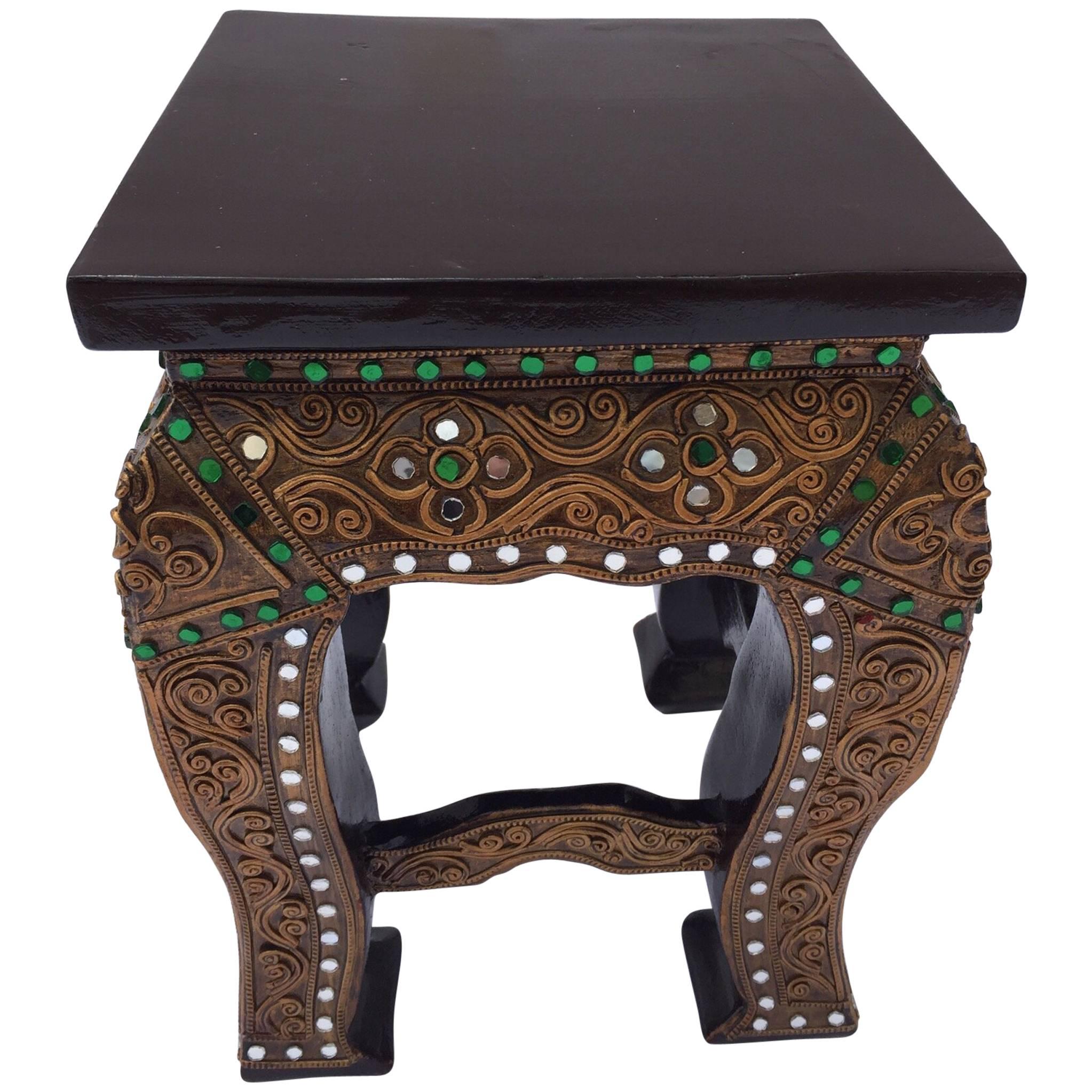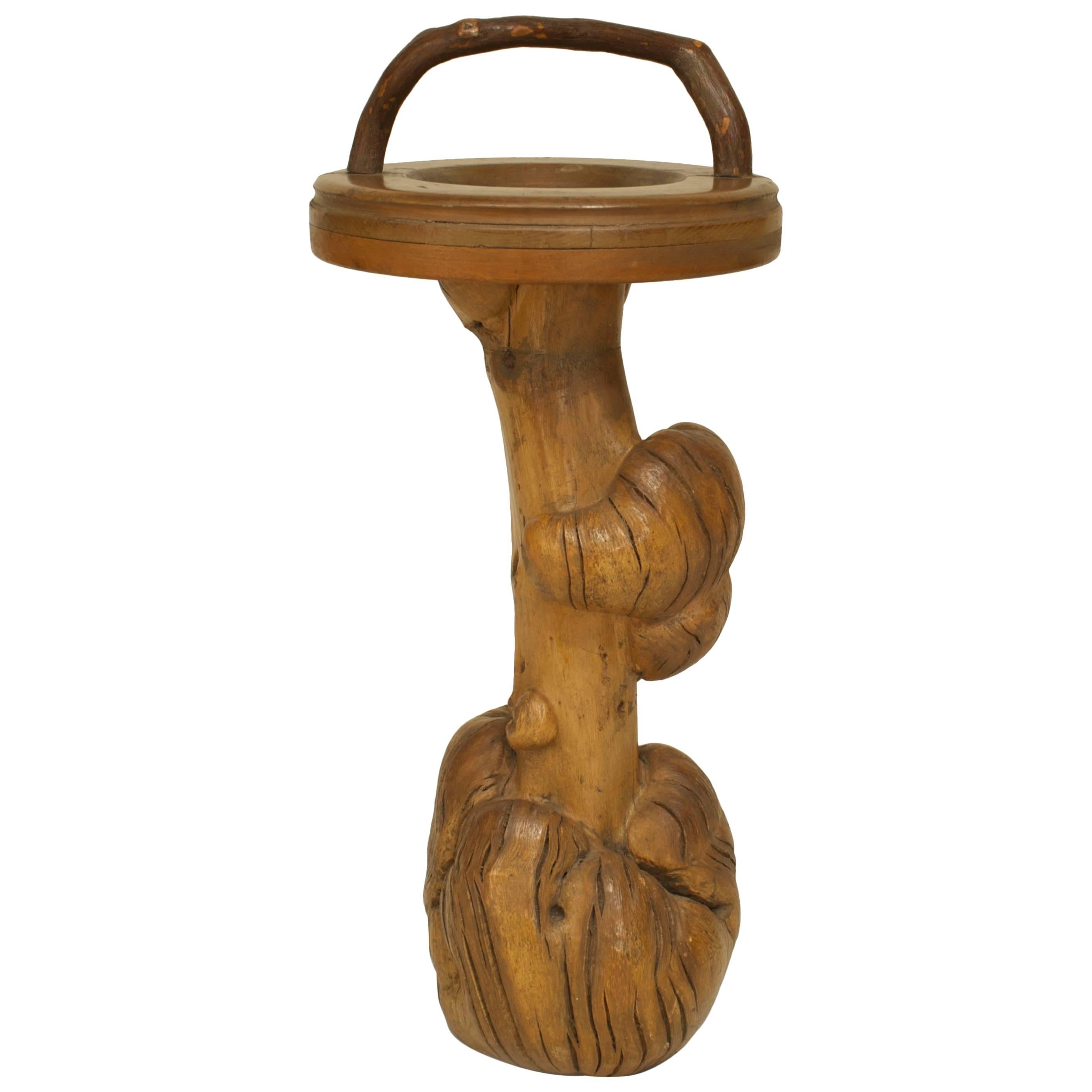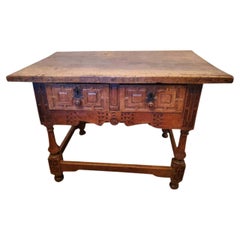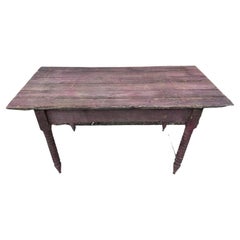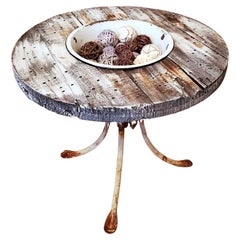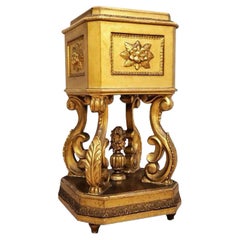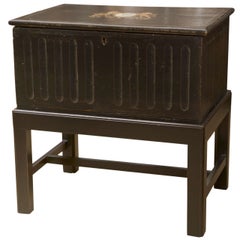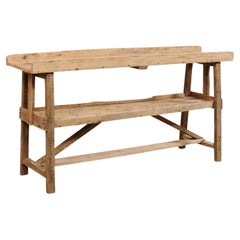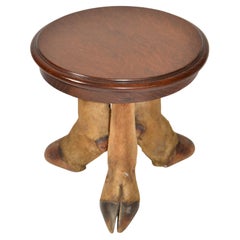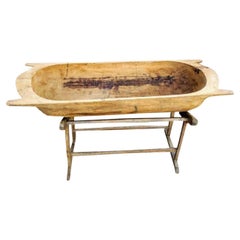
Rustic Wooden Dough Trough on Stand
View Similar Items
Want more images or videos?
Request additional images or videos from the seller
1 of 11
Rustic Wooden Dough Trough on Stand
Price:$1,220
About the Item
- Dimensions:Height: 35.5 in (90.17 cm)Width: 63.5 in (161.29 cm)Depth: 25.5 in (64.77 cm)
- Style:Rustic (In the Style Of)
- Materials and Techniques:Fruitwood,Oak
- Period:19th Century
- Date of Manufacture:19th Century
- Condition:Wear consistent with age and use. Minor fading.
- Seller Location:Forney, TX
- Reference Number:1stDibs: LU5977227087402
About the Seller
4.8
Platinum Seller
Premium sellers with a 4.7+ rating and 24-hour response times
Established in 2013
1stDibs seller since 2021
290 sales on 1stDibs
Typical response time: 1 hour
Authenticity Guarantee
In the unlikely event there’s an issue with an item’s authenticity, contact us within 1 year for a full refund. DetailsMoney-Back Guarantee
If your item is not as described, is damaged in transit, or does not arrive, contact us within 7 days for a full refund. Details24-Hour Cancellation
You have a 24-hour grace period in which to reconsider your purchase, with no questions asked.Vetted Professional Sellers
Our world-class sellers must adhere to strict standards for service and quality, maintaining the integrity of our listings.Price-Match Guarantee
If you find that a seller listed the same item for a lower price elsewhere, we’ll match it.Trusted Global Delivery
Our best-in-class carrier network provides specialized shipping options worldwide, including custom delivery.More From This Seller
View All17th Century Iberian Rustic Table
Located in Forney, TX
An exceptional rare Iberian (likely Spanish, possibly Portugese) carved walnut table with beautifully aged patina. Circa 1675
Hand-crafted in the second half of the seventeenth century, featuring period construction, having a thick rectangular single board slab top with desirable overhang, above two large frieze drawers with hand cut dovetail joints, decorative chip carvings, affixed with the original hand carved round pulls and ornate matching forged iron escutcheon, rising on box stretcher joined turned legs.
As warm and attractive as it is useful, with good size and proportions, this incredible European antique an...
Category
Antique 17th Century European Rustic Tables
Materials
Walnut
Rustic Antique American Farmhouse Weathered Work Table
Located in Forney, TX
A one-of-a-kind rustic antique American country work table in original plum - wine paint finish with heavily worn distressed patina!
Full of antique character and unique folky charm, featuring primitve hand-crafted farmhouse craftsmanship and solid wooden construction, having a plank boarded top, simple wide apron with pegged detail, rising on distinctive spool-turned Jenny Lind legs terminating in tapering ring-turned feet.
This rustic folk art table most likely originating in the Southern United States, handmade during the early/mid-19th century by a farmer, not a formally trained carpenter or furniture maker, adding to the overall antique character, elegant warmth, and rich historical depth.
Dimensions: (approx)
33" High, 64" Wide, 31" Deep
Provenance / Acquisition:
Acquired from reputable auction house Bright Star Antiques Co., Sulfur Springs, Texas. May 2022 Session 1.5 catalog. Founded on generations of experience in rare antiques and furnishings, Bright Star has been specializing in rare American country antiques and architectural elements for over 25 years.
Condition:
Beautiful age, weathered patina and attractive faded mellow coloring. Heavily worn, naturally distressed, chippy paint, losses, warping, slight wobble, substantial wear and tear consistent with age and use. Not overly strong or sturdy, but certainly functional and delivered ready for immediate use.
Jenny Lind’s Legs?
Johanna Maria Lind (Sweden; 1820–1887) spent many nights in the U.S. during her wildly popular concert tour, presenting an opportunity for furniture makers to claim that P.T. Barnum’s Swedish Nightingale rested in one of their beds. Celebrity endorsements—sanctioned or not—had been found to boost sales, and 19th-century entrepreneurs had little aversion to stretching the truth. By the time she returned to Europe, Jenny Lind’s name or likeness had been affixed to riding hats, cigars, dolls, perfume, and more. Still, the association between spool-turned beds and the name “Jenny Lind” appears to be a 20th-century phenomenon, likely an attempt to conjure a connection to simpler times after the fact.
Several bits of folklore connect the opera star with specific beds. The most widespread asserts that Philadelphia furniture manufacturer George J. Henkels placed a special bed—actually, a carved Rococo piece with a side canopy—in Lind’s hotel, and later gave it to her as a gift or, in a divergent ending, vowed to name it after her. A second story centers on a common, early 19th-century mahogany spool bed...
Category
Antique Mid-19th Century Rustic Industrial and Work Tables
Materials
Wood, Paint
Antique Reclaimed / Salvaged Rustic Farmhouse Bowl Table
Located in Forney, TX
A truly unique, one-of-a-kind antique center table, hand crafted from a vintage distressed and antiqued wooden spool/reel, a removable 19th centu...
Category
Early 20th Century Center Tables
Materials
Iron
19th Century Rococo Baroque Gilt Pedestal Stand
Located in Forney, TX
A 19th century Italian late Baroque elaborately carved giltwood pedestal stand from the estate of legendary American businessman, T. Boone Pickens.
Exceptionally executed, exotic...
Category
Antique 19th Century Baroque Pedestals
Materials
Upholstery, Giltwood
19th C. French Charles X Restoration Period Sewing Stand Work Table
Located in Forney, TX
A scarce period Charles X (1818-1834) French Restoration mahogany travailleuse sewing (thread stand - side table - jewelry dressing table) with light, warm, beautifully aged patina.
Born in France in the early 19th century, almost certainly Parisian work, exquisitely hand-crafted, this exceptionally executed example features ornate gilt bronze ormolu mounts, escutcheons, and elaborate gilt metal trim. Having a highly figured light mahogany hinged lid top, lifting open to reveal a striking finished interior with divided compartments and original inset mirror plate. The conforming rectangular case fitted with a faux drawer front over a dovetailed drawer with sectioned interior. Elegantly rising on oval-shaped medial shelf stretcher-joined curvacious legs.
Dimensions (approx):
27" High, 20" Wide, 13.5" Deep
Stunning light almost blonde antique mahogany coloring and mellow warm tone, superb wood grain detail, and charming, beautifully aged patina over the whole. Great shape overall. Retaining original antique character marks, wear consistent with age and indicative of minimal use, nothing that detracts from the aesthetics or functionality, but only adds to the overall authenticity, refined elegant warmth, luxurious sophistication, and cozy unpretentious rustic elegance.
Delivered cleaned, hand waxed, polished French patina finish, ready for immediate use and generational enjoyment!
What is Charles X style:
The comte d’Artois – or Charles X - was the son of the dauphin Louis-Ferdinand de Franc and Marie-Josèphe de Saxe. He succeeded his two brothers Louis XVI and Louis XVIII and became the King of France in 1824. Thirty years after the French Revolution, he wanted to embody the return of monarchy and became the leader of the catholic party . As the previous kings, he was crowned in 1825 but he was soon overthrown by the revolution in July, 1830, called "Trois Glorieuses". He left then for England, Scotland, Prague and Istria where he died in 1836.
Charles X style lasted from 1818 to 1834 and happened during the Bourbon Restoration (French Restoration). This style did not replace totally the style of furniture from the French Empire but it was different from the formalism in the Napoleonic era, during which strictness and simplicity were inspired by Greco-Roman art. Indeed, artistic fields flourished. In terms of furniture, this renewal was suggested by the softening of shapes. Even though the simple aspect from the French Empire was still visible, shapes became curvier with volutes and arabesques. Another distinction is the loss of the massive aspect of furniture and the decrease of dimensions in order to decorate smaller appartments. Handling ability and comfort were key-words in the making of furniture. Apartments had essential elements such as chests of drawers, big rounded tables in the dining room, desks or secretaries, armoires and even dressing tables, comfortable fainting couches in the living room, small tables, pedestal tables, as well as gondola chairs. The wavy aspect of the latters certainly represent Charles X style the best.
One of the most emblematic features of this style is the use of bois clairs – light woods in warm blond tones - and indigenous woods that are varnished in order to highlight the grains. Bird's-eye maple, ash trees, plane trees, yew trees, beech trees, olive trees and cedar trees were most likely to be used. Indeed, at the beginning of the 19th century dark woods were hard to find. In 1806, the Napoleon’s Continental System was established in order to ruin the United Kingdom by preventing the country from any business with the rest of Europe. Therefore craftsmen had to find alternatives from mahogany which was the most commonly used material at this time. After 1815, the import of wood was even more difficult because of peace treaties and the European political situation, which contributed to the popularity of the bois clairs and indigenous woods. The furniture was often decorated with fine inlays made out of dark wood representing foliage, which contrasted with the veneer. Even though these patterns can look like bronze decorations from the Empire era, they were far more simple and did not represent any military or mythological attributes. On the tables, trays were sometimes made out of marble as in the French Empire, but it was often put aside and inlaid veneer, Verre Eglomisé – a type of glass with a mirror finish –, mirror or porcelain from Sèvres or Paris were more likely to be used.
Decorative elements from the Monarchy were highly appreciated again as they suggested luxury. Indeed, marquetry work was particularly fashionable - Boulle marquetry thrived around 1820 as the works of the Levasseur family can show. In the same way, draperies and trimmings referred to the monarchist splendour. Fabrics were often white – the traditional colour of the Bourbons – or light coloured as oppposed to the typical green from the Napoleonic era.
One of the most symbolic figures from this period of time might be Jean-Jacques Werner (1791-1849), a cabinetmaker who worked for prestigious clients such as the Duchesse de Berry who was Charles’s step-daughter. His works can be seen at the Musée des Arts Décoratifs and at the Grand Trianon in the Palace of Versailles. The duchess’s appartments situated at the pavillon de Marsan and at the Palais de Saint Cloud illustrate Charles X style the best with furniture made out of bois clairs and ornamented with dark wood patterns or fine gold decorations.
Chales X style allows a transition between the sobriety of the Empire style and the abundant aspect of Louis-Philippe style. The gothic style started at this time through the "style à la cathédrale", inspired by religious architecture, which thrived from 1827 to 1830. Indeed, at the beginning of the 19th century, Romanticism put the spotlight on the Middle Ages. Cabinetmakers were not inspired by the medieval furniture but rather by architectural elements of churches and cathedrals. For instance the backs of chairs were decorated with arches shaped like rib and serration. In the same way, before Charles X abdicated, pieces of furniture were made out of dark woods – such as mahogany, which was used again in France – and were inlaid with light wood. Romanticism also influenced the layout of furniture in appartments to suggest movement through a mix of various styles, various shapes and various sizes, as opposed to the static aspect of Neoclassicism. The start of industrialisation and mechanisation also influenced this style as early technical developments led to the production of pieces of furniture in series.
Credit:
Marc Maison
Bibliography:
FANIEL Stéphane (Dir.), Le Dix-neuvième Siècle Français, Collection Connaissance des Arts, 1957, Hachette
SASSONE, Adriana Boidi, Furniture from Rococo to Art Deco, 2000, Evergreen
--
Extremely versatile:
As warm and attractive as it is useful, this remarkable antique table having the ideal size and small proportions for a variety of different uses, including as a side table, accent or occasional table, tall sofa...
Category
Antique Early 19th Century French Charles X End Tables
Materials
Bronze, Ormolu
Rustic Antique Country Swedish Gustavian Distressed Painted Pine Stand
Located in Forney, TX
A most distinctive Swedish Country hand painted wooden stand. Hand-crafted of solid pine, most likely Gustavian Period (1772–1809), finished on all sides, showcasing layers of the or...
Category
Antique 19th Century Gustavian Cabinets
Materials
Pine, Paint
You May Also Like
Rustic Mid-Century Wooden Trough Accent Table on Custom Iron Base
Located in Atlanta, GA
A striking piece of American rustic design, this mid-20th-century trough repurposes the raw beauty of aged wood with a sturdy iron base, blending organic textures with industrial str...
Category
Mid-20th Century American Rustic Side Tables
Materials
Iron
Hand-Painted Wooden Chest on a Custom-Made Stand
Located in Mt Kisco, NY
A 19th century English storage chest hand-painted with a decorative lion crest sits on a custom-made solid wood stand.
Category
Antique 19th Century English Tables
Rustic Two-Tiered Spanish Wooden Antique Table
Located in Atlanta, GA
A Spanish tiered wood console table from the early 20th century. This antique table from Spain has a rectangular top with raised edge along each longer side, and a span just shy of 6 feet in length. A secondary shelf is recessed beneath the top, and supported within a pair of saw-horse style legs at each far end, and a v-shaped brace and bottom support beam at bottom. This rustic Spanish antique...
Category
Early 20th Century Spanish Console Tables
Materials
Wood
50s Rustic European Taxidermy Oak Top Low Table Bonsai Stand Mid-Century Modern
Located in Miami, FL
Mid-Century Modern Rustic European handmade low Table, Bonsai Stand or Plant Stand.
Features an Oak Wood Table with 3 legs from a mountain goat.
Great interior decoration for a perfe...
Category
Vintage 1950s French Rustic Tables
Materials
Fur, Goatskin, Goat Hair, Oak
$1,540 Sale Price
30% Off
Rustic Spanish 6+ Ft Long Wooden X-Stretcher Table, 19th C.
Located in Atlanta, GA
A Spanish wooden trestle-leg table with x-stretcher from the 19th century. This antique table from Spain is rustic and casual with it's beautifully aged wood top, and clean design li...
Category
Antique 19th Century Spanish Tables
Materials
Wood
Rustic Cricket Table
Located in Greenwich, CT
An early 19th century rustic vernacular cricket table with red wash having a round top with three spoke shaved pole legs fixed to a hewn underside block and joined by a "T" stretcher...
Category
Antique 1830s Welsh Rustic Tables
Materials
Ash, Pine, Paint
$3,900
